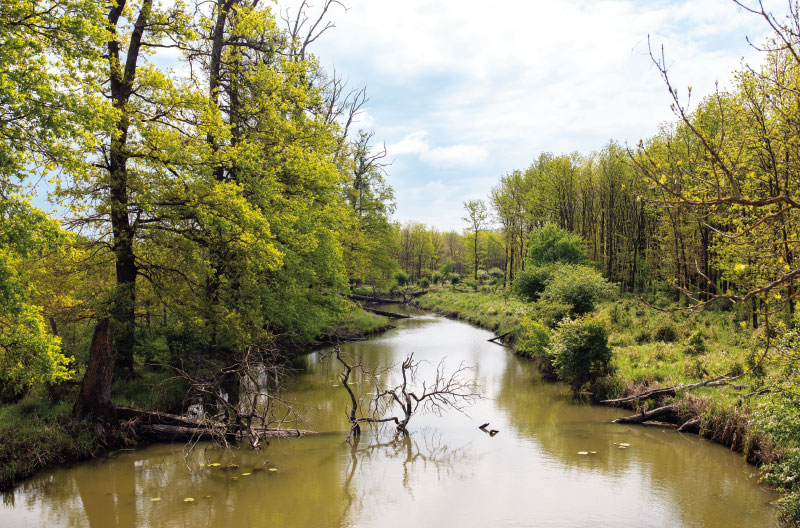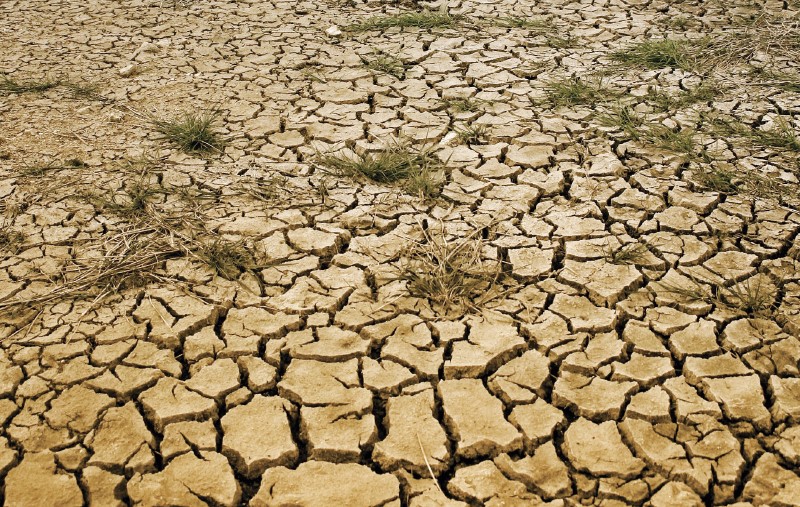Department of Hydraulics, Hydrology and Hydrogeology: international projects starting in 2025
At the T. G. Masaryk Water Research Institute (TGM WRI), two international projects were launched in 2025. These include the SWIM project, funded under the Horizon Europe programme, and the FrauNyLu project, supported by the Interreg cross-border cooperation programme. Both projects also address hydrological topics, which will be managed by the Department of Hydraulics, Hydrology and Hydrogeology.
HYMOD-KZ database and deficit areas
This article describes the HYMOD-KZ database, available at https://shiny.vuv.cz/HYMOD-KZ/. The database provides detailed results of hydrological modelling and hydrological balance analysis of catchments (water bodies) for current and future climate conditions; it also includes updated deficit areas, the description of which is part of this article. This tool can serve as a foundation for water management ex-perts, academia, and the broader professional community as it provides outputs at the spatial resolution of water bodies. The graphical rep-resentation of results facilitates understanding of complex hydrological phenomena and supports decision-making in water management planning.
Danube Regional Water Lighthouse
Accessible and high-quality water is a natural resource essential for life, well-being, and social prosperity. After decades of intensive exploitation, pollution and socio-economic pressure, Europe’s freshwaters and seas are at risk of degradation. This has to be seen not only as a potential dramatic loss from an economic point of view, but also it means unpredictable ecological, social, and cultural damage. The European Commission has responded to this challenge by creating the research and innovation mission Restore our oceans and waters; with a 2030 target, the aim is to provide a systemic approach for the restoration, protection and conservation of oceans and freshwater. In 2022–2025, a development and pilot phase has been underway, during which four so-called Mission Lighthouses were launched. “The Danube Regional Water Lighthouse Action” (DALIA) aims to significantly contribute to the improvement of the state of the Danube basin; it is financed by the European Union under the Horizon Europe programme with a total subsidy of € 8,499,236. The basin is home to almost 80 million people and extends over 19 European countries, which is exceptional even on a global scale.
Drought warning system and local threshold limits
Droughts and floods are extreme hydrological phenomena that are currently increasing in frequency due to the growing impact of climate change, and can have significant effects on our lives. Within the “PERUN” research project, an assessment of drought conditions and their development in the Czech Republic is being developed, along with the innovation of the warning system by the Czech Hydrometeorological Institute (CHMI). Drought is a natural phenomenon characterized by a gradual onset, long duration, and low dynamics, which requires a specific approach. The amendment to the Water Act introduces the obligation of regular reporting on drought and the establishment of a predictive service to be conducted by CHMI. Tools are being developed for long-term prediction of water resource conditions and a methodology for drought and water scarcity management plans. These plans aim to ensure water supply, protect the environment, and minimize the economic impacts. The decision-making body for issuing measures based on the drought plans is the Drought Commission, which operates at the regional level. The warning information is available on the HAMR web portal, which also displays local threshold limits for individual water resources.
The current version of the BILAN model
BILAN je celistvý konceptuální model v denní/měsíční struktuře (schéma je uvedeno na obr. 1), simulující složky hydrologické bilance na povodí. Přestože jeho vývoj byl nastartován ve VÚV TGM již počátkem devadesátých let minulého století, jde o model, který je v České republice stále standardně používán a zůstává přístupný laické i odborné veřejnosti. Například je nedílnou součástí řešení aplikace/systému HAMR [1], ale byl použit i jinde [2–4]. Mezi hlavní výhody modelu oproti jiným řešením patří interní kalibrační algoritmy, možnost přímého vkládání dat o užívání vod a nízká výpočetní náročnost vhodná pro variantní simulování (např. dopadů klimatické změny na vodní režim).
HAMR: Online drought management system – operational management during a dry episode
Increasing occurrence of drought periods in the Czech Republic has highlighted a necessity of legislation modification. At the same time, a need has emerged for tools supporting decision making and water resources management at various levels during the drought periods.





